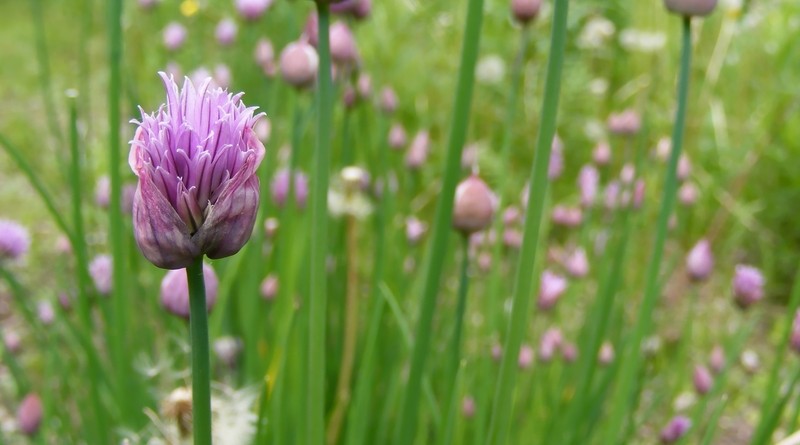All around you are plants that in a pinch are food sources. By understanding what plants are edible and as importantly, what plants provide optimal calories and nutrition for a survival setting, read below.
1. Amaranth
Amaranth is a prolific weed which is native to North America. All parts of the plant are edible, although you do need to be somewhat careful. The grain from the amaranth plant has become more popular in recent years. There are spines on some leaves which should be avoided. The leaves contain oxalic acid, especially if the plant has grown in nitrate rich soil. To protect yourself against that, boil the plant in water and then throw away the water. If worse comes to worse, it can be eaten raw.
2. Asparagus
Asparagus grows wild in parts of North America, especially the northeastern part of the United States. Wild asparagus has a much thinner stalk than the commercial varieties. To harvest, bend it until it snaps off. It will snap at the right point to prevent killing the plant, while providing you with the most edible part.
3. Bamboo
If anyone around you has decided to grow bamboo in their backyard, it’s probably gotten out of hand. This prolific grass spreads rapidly, taking over everything in its path. While the mature plants are like chewing on wood, the shoots can be eaten. Shoots should be harvested before they are two weeks old and one foot tall. Peel off the outer leaves and boil them to soften. Bamboo shoots are often added to salads, put on sandwiches or used in stir-fries.
4. Cattails
Found near the edges of wetlands, cattails were a staple in the diet of many American Indian tribes. Most of the plant is edible. You can boil the roots and lower stalk for eating. The leaves can be cooked and eaten like spinach. The flower spike at the top can be broken off and eaten like corn on the cob. Surprisingly, it tastes much like corn.
5. Chicory
Chicory is most easily identified by its flowers. It is a bushy plant with small blue, lavender and white flowers. Leaves can be eaten raw or boiled. The flowers are a quick, tasty snack. The roots can be eaten as well, but require boiling to make them edible. Toasted chicory root has been used in the past as a substitute for coffee when coffee wasn’t available.
6. Chickweed
This low-growing plant has bright green, pointed oval leaves. It is highly nutritious, containing vitamins, minerals and omega-6 fatty acid. Young leaves can be used effectively in salads. However, if too much chickweed is eaten, it can cause diarrhea.
7. Clover
Clover is very common throughout the country. Anywhere you find a grassy area, you are likely to encounter clover as well. They are easy to identify for the three leaves. The plant can be eaten raw, but will taste better cooked.
8. Curled Dock
These are some of the hardiest, most widespread and most persistent weeds found anywhere. You can find them nearly everywhere. Like dandelions, it is almost impossible to pull one out of the ground. If you do, it will probably be replaced by two more. The leaves are tasty and can grow as large as two-feet long. There are also other types of docks in this family, but the curled dock is considered the tastiest.
9. Dandelion
This common “weed” is actually edible; in fact, the entire plant is edible: roots, leaves and flowers. It’s also rather healthy, being a “cure-all” in herbal medicine. You’ll want to eat the leaves while the plant is still young, as mature leaves have a bitter taste to them. Boil the roots before eating, and then use the water from boiling the roots as a tea. The dandelion flower makes an excellent garnish for a salad.
10. Fireweed
This is another plant that was eaten by many American Indians. It is easy to identify by the vein pattern in the leaves. Rather than terminate at the edge of the leaves, the veins create a circular pattern.
These plants are best eaten when young and tender. As they age, the leaves become tough and bitter tasting. Both the leaves and the stalk can be eaten. The flowers have a slightly peppery taste.11. Garlic Grass
This is a wild strain of garlic which is often found in fields, pastures and forests. It resembles cultivated garlic or spring onions. The shoots are often very thin. Nevertheless, it can be used in sandwiches, salads, pesto or chopped like scallions to add to cooked dishes.
12. Green Seaweed
This particular variety of seaweed is found in all the oceans of the world.
Being able to identify common plants that are edible not only will provide you with potentially life sustaining nutrition, it also will set you apart from most of your peers.
Reality is most of us have no idea what plants in the wild are edible, poisonous or too much of a hassle to bother with. Understanding the former, however, can mean in a survival situation the difference between going hungry and being able to sustain yourself.
For review the tips above and even more tips on edible plants (and what to watch out for), please visit Off the Grid News.
